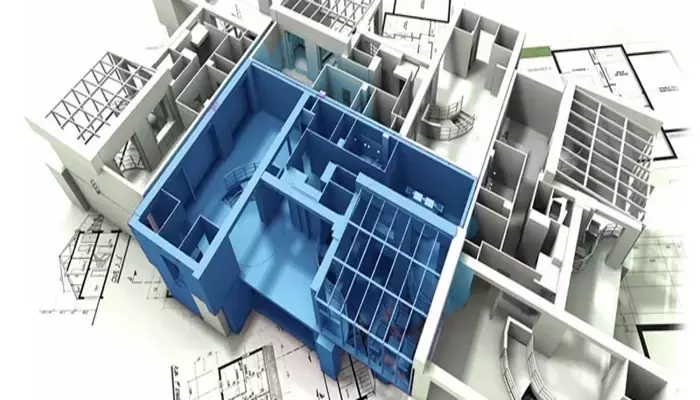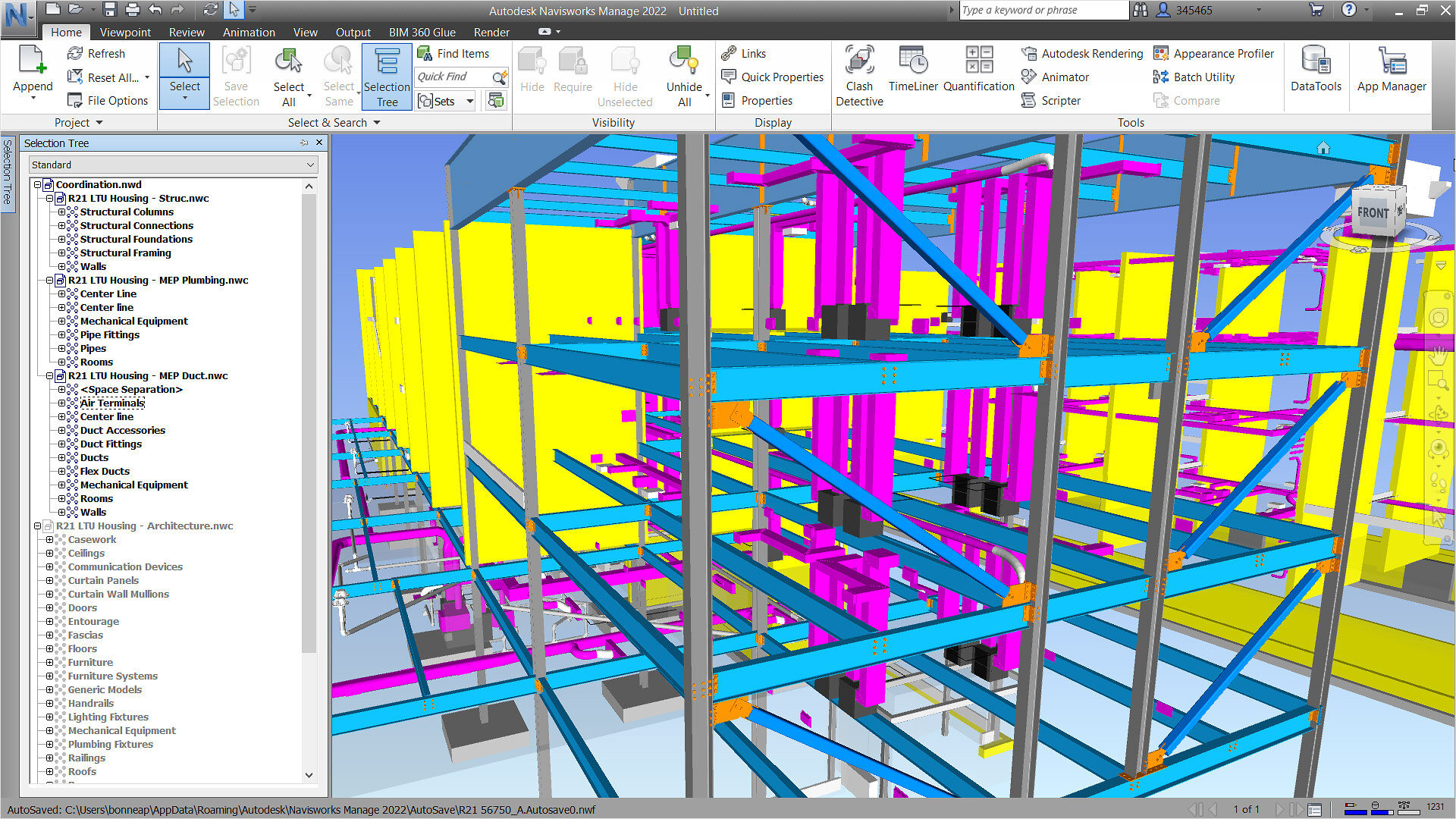Exploring the Benefits of BIM for a Planning Engineer

Table of Contents
The design and organization of the spaces and structures that comprise the built environment is a significant component of the architectural planning process. Building Information Modelling (BIM) software is used by planning engineers to design, plan, and manage building projects. BIM creates a 3D digital model of the building to visualize and simulate various construction scenarios, estimate costs and materials, and spot possible problems before work begins.
What is Planning?
Designing and organizing the physical components of the built environment is referred to as planning. It entails considering the spatial relationships between various areas, the movement patterns within the space, and the design's overall functionality. When planning, the engineer considers the wants and needs of the users, the resources at hand, the site's physical characteristics, the surrounding environment, and the project's aesthetic objectives. The goal is to design a space that serves its intended purpose while being aesthetically pleasing and functional.
Typically, the design process begins with the planning stage. Conceptualizing the general design and structure of the building or spaces is the first step in the process, followed by the detailed design and specification of the materials, finishes, and other components that make up the finished product. Effective planning is essential to guarantee that the structure or area satisfies user needs, realizes its full potential, and accomplishes its objectives within the constraints of the available resources.
Role of Planning Engineers
Planning engineers play an important role in the BIM-enabled planning process as they work with stakeholders to ensure optimal coordination and communication. They use BIM tools to develop, analyze, and optimize digital models, allowing for more informed decisions and design refinement. Their knowledge of spatial analysis helps them to evaluate elements such as circulation patterns and space utilization to improve efficiency and resolve problems. Another component is resource management, which involves using BIM tools to assess quantities and optimize allocation for cost-effective planning. Planning engineers use BIM in an iterative design process to develop the design based on feedback and restrictions which results in an optimal solution. They are important in leveraging technology, promoting collaboration, and assuring design success in BIM-enabled planning.
Applications of BIM in Planning

Building Information Modeling (BIM) has numerous applications in the planning phase of construction projects. BIM brings significant benefits to the planning process by providing a comprehensive digital representation of the building or infrastructure project. It also contributes to more informed decision-making, streamlined workflows, reduced errors, and improved collaboration, ultimately leading to well-planned and successful construction projects. Some of the key applications of BIM in planning include:
1. Visualization and Conceptual Design: BIM enables planners to create 3D visualizations and virtual models of the proposed project. This aids in better understanding the design intent, exploring various design options, and presenting concepts to stakeholders for feedback and approval.
2. Clash Detection and Coordination: During the planning phase, BIM helps identify clashes and conflicts between various building systems and components, such as architectural, structural, mechanical, and electrical elements. Detecting clashes early on allows for prompt resolution, reducing rework and construction delays.
3. Space Planning and Optimization: BIM facilitates space planning by providing accurate and detailed information about the building's spatial layout. Planners can analyze different space configurations, optimize space utilization, and ensure compliance with building codes and regulations.
4. Cost Estimation and Quantity Takeoff: BIM supports quantity takeoff and cost estimation during the planning phase. By extracting data from the BIM model, planners can generate accurate material quantities, enabling more precise cost estimates and budget planning.
5. Energy Analysis and Sustainability: BIM allows for energy analysis and simulation, helping planners assess the building's energy performance. They can analyze and optimize the design to enhance energy efficiency and sustainability, reducing the building's environmental impact.
6. 4D and 5D Planning: BIM can incorporate time-based and cost-based data, enabling 4D (time) and 5D (cost) planning. This feature allows planners to visualize the construction sequence and project schedule, helping to identify potential scheduling issues and optimize construction timelines.
7. Urban Planning and Infrastructure Management: BIM can extend beyond individual buildings to support urban planning and infrastructure management. Planners can create digital city models, assess the impact of new projects on the existing environment, and plan for future urban developments.
8. Design Analysis and Simulation: BIM provides tools for analysis and simulation, such as structural analysis, daylight analysis, and wind analysis. These simulations aid in making informed design decisions and ensuring the building's performance meets regulatory standards.
BIM Software used by Planning Engineers
Building information modelling software allows planning engineers to evaluate costs and materials easily, and identify potential issues before work even begins by visualizing and simulating different construction scenarios. Using these tools, which provide a variety of characteristics and features, planning engineers may develop intricate 3D models of buildings and structures to analyze costs and materials and collaborate more effectively with other stakeholders during the construction process.
1. Autodesk Revit

A comprehensive 3D model of the building can be created using this robust BIM software, making it possible to share it in real-time with other involved parties. Planning engineers can produce more precise and effective building designs and plans for construction by making use of Revit's numerous features and capabilities, such as data management, visualization, and analysis.
2. Trimble SketchUp

It is a user-friendly 3D modelling software that enables planning engineers to create detailed 3D models of buildings and structures quickly and easily. The advantage of using SketchUp lies in its ability to offer various tools and features to create and modify designs, apply materials and textures, and collaborate with other stakeholders much more easily.
3. Bentley MicroStation

A BIM program provides planning engineers with a set of tools for designing, modelling, and documenting building projects. Using MicroStation, planning engineers can produce intricate 3D models of structures, roads, bridges, and other infrastructure projects. Advanced features for data management, visualization, and analysis are also available.
4. ArchiCAD

Planning engineers and architects can create complex 3D renderings of structures and buildings using the BIM software Archicad. Planning engineers can produce more precise and effective building designs and construction plans with the help of various features, such as data management, visualization, and analysis.
Benefits of BIM in Career Opportunities
The AEC industry has seen a significant rise in the adoption of BIM, resulting in a growing need for skilled professionals who specialize in it. BIM managers, coordinators, modellers, and technicians are highly sought after to lead and support projects utilizing BIM methodologies. Possessing expertise in BIM can provide individuals with multidisciplinary skills, making them valuable assets to employers and leading to a broader range of career opportunities.
BIM professionals work with different disciplines in the AEC industry, promoting collaboration among various stakeholders involved in a construction project, such as architects, engineers, contractors, and facility managers. Professionals who can effectively manage and coordinate BIM processes are in high demand and can improve their career prospects. BIM enhances project workflows, increasing efficiency in the design, construction, and operation phases, which contributes to delivering projects on time and within budget.
BIM professionals stay relevant in a rapidly evolving industry by keeping up with BIM advancements and adapting to modern construction practices and technology. By doing so, they future-proof their careers. It involves managing and integrating massive amounts of project data, and those who can effectively manage, analyze, and leverage this data have a competitive edge and open up opportunities in areas like data-driven decision-making and building performance analysis.
BIM is universally adopted, opening up job opportunities in various locations, both domestically and internationally. The proficiency of BIM accelerates career progression, leading to recognition by organizations and opportunities for leadership roles and project management responsibilities. Several institutions offer specialized BIM training and certification programs, which demonstrate expertise and commitment to their careers, boosting their marketability.

Course Suggestions for Planning Engineers
Many courses are available for the individual needs of planning engineers wishing to improve their abilities and stay up to date with the latest industry practices. Building Information Modelling (BIM), software proficiency, and project collaboration are just a few of the topics covered in these courses. Planning engineers can broaden their experience and contribute to effective project outcomes by taking these courses. Here are some specific course recommendations for planning engineers:
1. Autodesk Revit Training
Autodesk offers a range of Revit training courses for beginners, intermediate and advanced users. These courses cover a variety of subjects, such as modelling, detailing, planning, and teamwork.
2. BIM Fundamentals
This course comprehensively introduces BIM and its applications in the construction industry. The course covers BIM standards, workflows, and data management.
3. BIM Management
This course focuses on the management aspects of BIM and covers topics such as BIM planning, implementation, and maintenance.
4. BIM Professional Course for Civil Engineers
For engineers aspiring to add a professional dimension to their career through technology, Novatr offers a 7-month course especially curated for civil professionals.
5. BIM for Construction Management
This course is designed for planning engineers who want to learn how BIM is used for construction management. Topics covered include scheduling, resource allocation, and cost estimation.
6. Bentley MicroStation Training
Bentley offers a range of training courses for planning engineers who want to learn how to use MicroStation for BIM. These courses cover topics such as modelling, detailing, and visualization.
7. Revit MEP Training
This course is designed for planning engineers in the mechanical, electrical, and plumbing (MEP) fields. It covers topics such as system design, documentation, and collaboration.
8. BIM Coordination
This course covers BIM coordination principles and practices, focusing on identifying and resolving conflicts and clashes in BIM models.
In Conclusion
BIM is a useful tool for planning construction projects. It generates a 3D digital model of the building, enabling planners to visualize and simulate different scenarios, estimate costs and materials, and identify potential issues in advance. Planning engineers who have expertise in BIM are in high demand in the industry. Specialized training and certification programs can improve their appeal to employers. BIM provides a wide range of opportunities for planning engineers to contribute to successful construction projects and promote innovation, efficiency, and sustainability in the built environment.
The design and organization of built-up spaces and structures is the planning process. Planning engineers in the construction industry use the powerful numerical tool called "Building Information Modeling" (BIM) to design, plan and manage construction projects. Overall, BIM is a powerful tool that can improve the design, construction and operation of buildings and infrastructure projects, and is a crucial skill to plan engineers for their careers. Additionally, Novatr provides programs like the BIM Professional Course for Civil Engineers. Planning engineers who complete these courses will have more opportunities for employment and career advancement due to their improved BIM skills and knowledge.

 Thanks for connecting!
Thanks for connecting!




.png)



